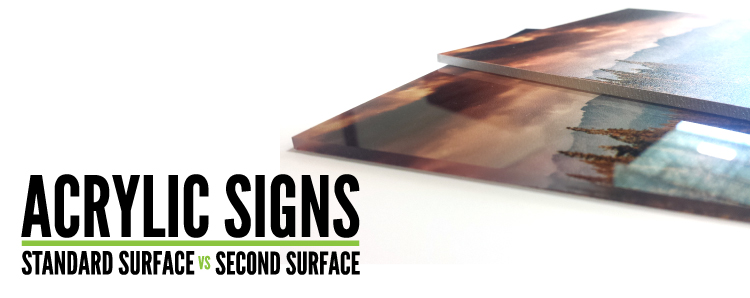Our “Signage 101” series helps you make sense of the world of signage and all of its different options. We’ve navigated the confusing waters of window signage, helped you understand the different types of aluminum solutions, and showed you the importance of image quality. Today, we’ll explain the benefits and drawbacks of printing acrylic on the front side of the acrylic (what is known as standard surface) versus the back side of the acrylic (second surface).
PROPERTIES OF ACRYLIC
Before we can delve into the difference between standard surface and second surface acrylic, it’s important to understand the properties of the acrylic itself. Acrylic is very different than anything else we offer at Signs.com. It is a clear, plexiglass material that is ⅛” thick. It is durable enough to use inside or outside, although we do recommend indoor use. The use of acrylic outside tends to shorten the lifespan of the sign due to sun damage and exposure to the elements.
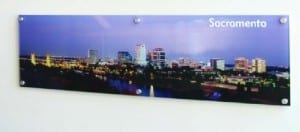
Acrylic is also very lightweight (about a half a pound per square foot), which makes hanging the sign a breeze! Standoffs can also be purchased for the acrylic sign, allowing for easy installation and a dynamic, professional look.
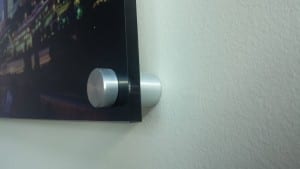
Although acrylic is one of the most aesthetically beautiful signs we offer, acrylic does have some drawbacks. It can scratch easily, so to keep your sign looking brand new, be sure to avoid the use of sharp objects near it.
USES OF ACRYLIC
The acrylic can be used as lobby signage, directional signage and architectural signage. It’s the perfect substitution for traditional glass because it is safer and much more affordable. Acrylic can be cut to any shape you desire, making it a great choice for statement walls in your office, or as custom directional signage. We offer both a halo cut and a contour cut. The halo cut would cut around the general shape of the design. We also can cut each of the pieces of the artwork out individually with what is known as a contour cut.
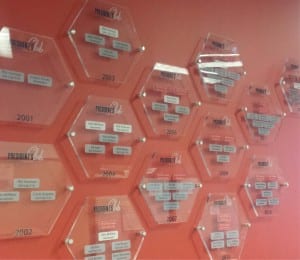

Acrylic is commonly used to display company logos or high resolution photographs. They can be used as a beautiful, prominent display in a lobby or at the entrance to a business.
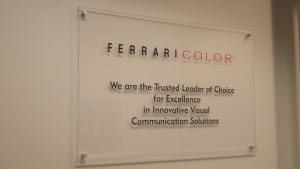
The ink is applied directly to the surface of the acrylic. Therefore, we are able to print on both the front or the back of the acrylic. Both offer different signage solutions. The purpose of this blog post is to help you determine which of these two options is right for you.
FRONT SIDE (STANDARD SURFACE) ACRYLIC
Standard surface acrylic puts the ink on the front of the acrylic piece. This causes the image to have a matte finish. You can feel the ink if you were to run your fingers across the face of the acrylic. Printing the acrylic standard surface is also less expensive than printing the acrylic with a second surface print because second surface printing takes more production resources.
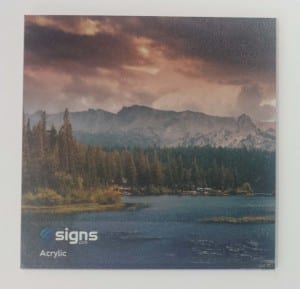
Standard surface printing also has it’s drawbacks. Since the print is on the front of the material, it no longer has a clear look to it. It’s simply a matte image. Also,the ink is on the front of the material, so it’s more prone to damage, such as scratching.
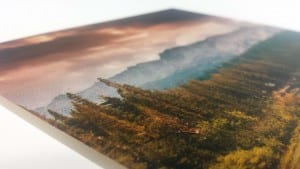
BACK SIDE (SECOND SURFACE) ACRYLIC
On second surface acrylic, the ink is printed on the back of the acrylic. This allows you to look through the clear material itself and onto the print. This gives the overall look a glossy finish with a depth that standard surface doesn’t provide. Since the print is on the back of the acrylic, it gives it more protection from both the elements and vandalism. It’s recommended, if you’re putting the acrylic sign outside, that you choose the second surface option.
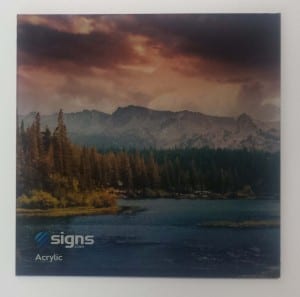
In addition, the second surface printed acrylic can be used as a white board by using it with Expo dry-erase markers.

Second surface printing also has it’s own setbacks. Since it takes longer to print due to the material properties, it does cost more. Because the print is on the back, second surface acrylic can cause glare and can be hard to see in direct sunlight. It also is prone to showing fingerprints because of its glossy finish.
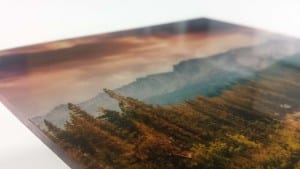
While both standard surface and second surface printing have their respective drawbacks and advantages, it’s up to you to select the best option for your sign. Get started on your acrylic masterpiece by visiting our acrylic product page, browsing our templates, or requesting free design help. As always, feel free to call us with any questions!





























